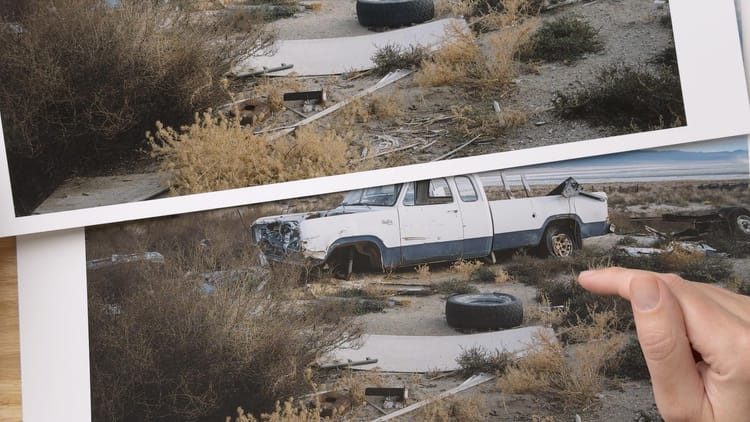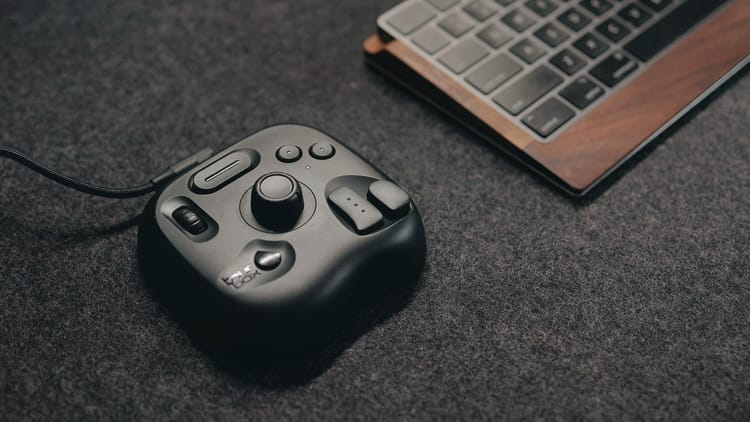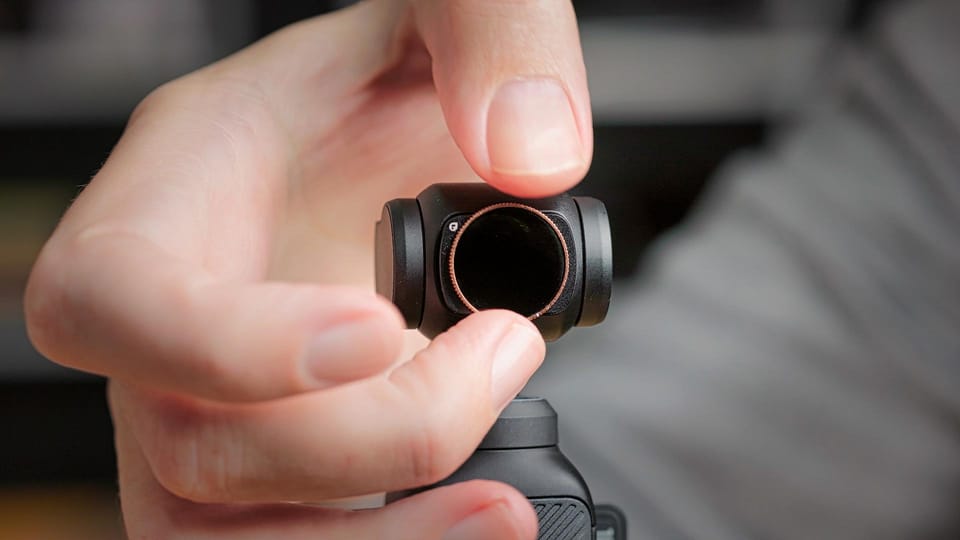
PolarPro filters for Osmo Pocket 3 review
After my recent review of DJI Osmo Pocket 3 filters made by Freewell, I decided to check out additional filters made by PolarPro. Specifically, PolarPro's "Shutter" solid NDs, "Vivid" dark CPLs, and their Circular Polarizer (CP). Here's what I've learned thus far.
- Good construction and design
- Quality glass
- Improves photo and video quality
- More expensive than other brands
- Cannot be purchased as a set
- Small, fiddly, easy to smudge and lose
PolarPro's Pocket 3 filters
PolarPro's "Shutter" ND pack includes ND8 (3 stop), ND32 (5 stop), and ND128 (7 stops) solid ND filters. The "Vivid" dark CPL pack includes the same three densities, but with two panes of polarized glass that filter sunlight to improve clarity and mitigate glare and reflections. The standalone CPL functions the same as the "Vivid" filters but without darkened glass. All filters use PolarPro's multicoated "CinemaSeries" glass found in other PolarPro filters, which promises optimum image color, durability and light transmission.
The filters themselves are well constructed and showcase the same brass colored aluminum and black color scheme of other PolarPro filters and products. The filters are magnetized, so they can be easily attached and detached from the Pocket 3 lens. All sit inside a small groove around the lens so you know when a filter has been properly mounted and aligned. Once mounted, the PolarPro filters stay in place while moving the Pocket 3.
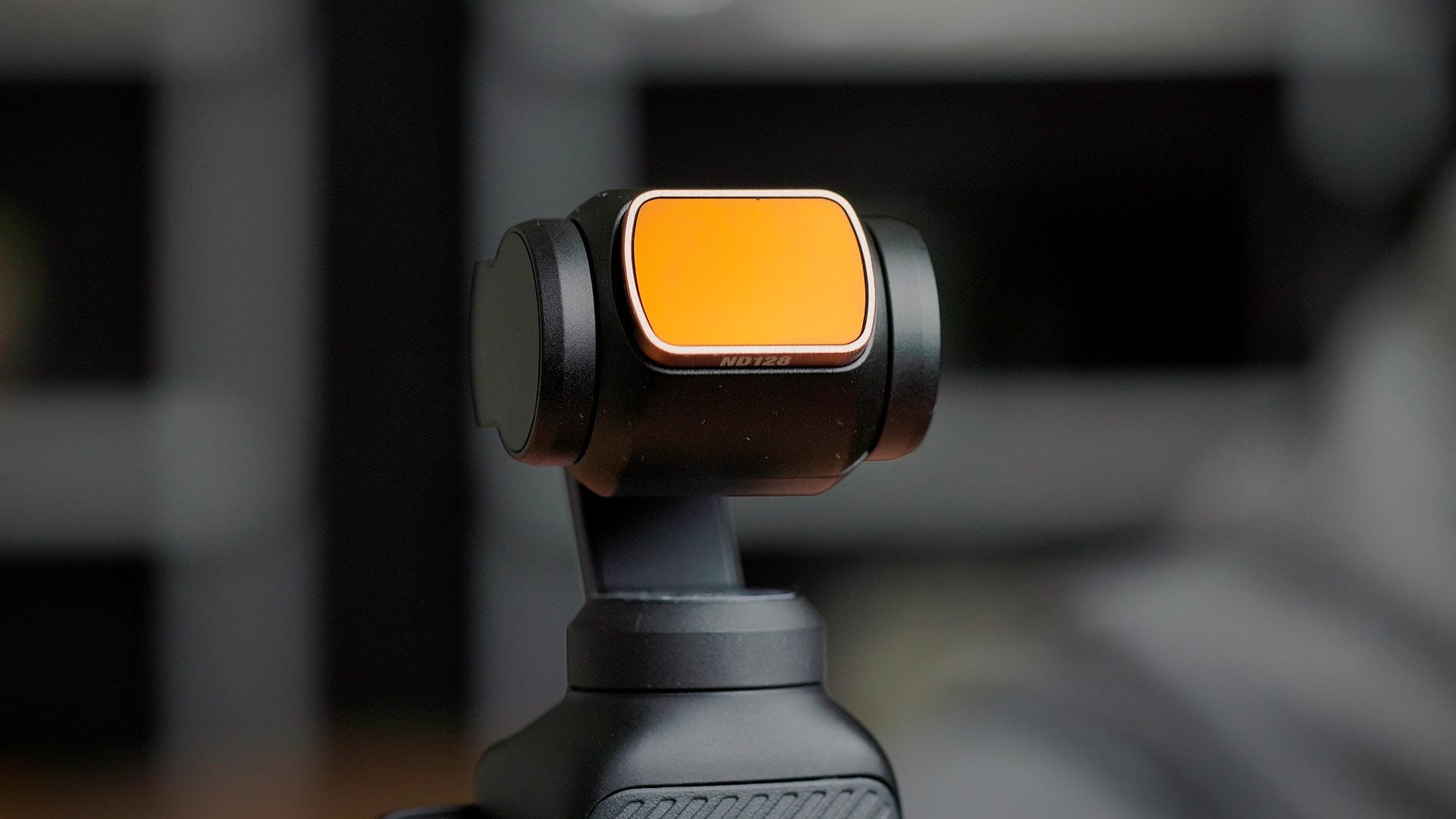
All three filters come with identical storage cases made of black plastic with locking clasps that protect the filters when not in use. Thankfully, filter types are printed on the outside to help distinguish on set of filters from another.
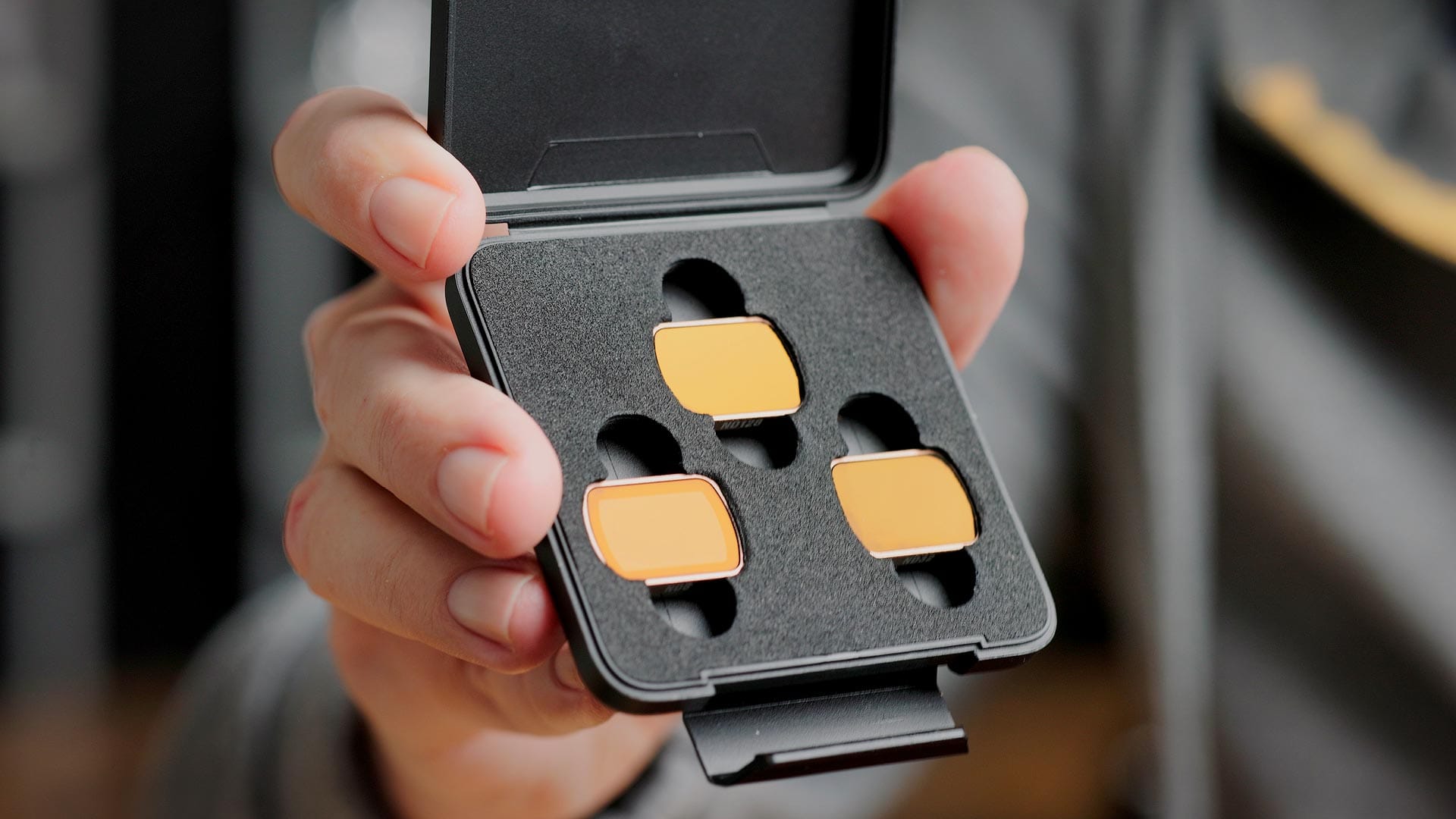
The cases are well constructed and good quality, though I do wish every Pocket 3 filter could be purchased together and stored in a single case instead of three separate cases. Additionally, the foam inserts do a good job of holding the filters in place, but I can never remove a filter from the case without smudging it with fingerprints. I found that inserting the filters backwards did a better job of keeping their front glass clean.
PolarPro qualitative results
Either the solid NDs or dark CPLs may be used to reduce incoming light and capture video at a fixed shutter speed that matches frame rate according to the 180-degree shutter rule (shutter speed = 1/frame rate*2). For example, 1/50 of a second at 24/25 fps, 1/60 of a second at 30 fps, etc.
The Pocket 3's gimbal does a great job of stabilizing footage all on its own, but a slower shutter speed that matches frame rate helps make video appear smoother and more natural. The effect will be especially noticeable with fast moving subjects (eg, cars, trains, etc), but it also smooths-out small micro-jitters when walking and vlogging.
Rotating the glass is necessary to achieve maximum polarization relative to the angle of the sun. Finding the optimum angle can be difficult to see on the Pocket 3's small screen, so for "good enough" linear polarization, PolarPro recommends aligning the laser-etched white tick marks on the bezel and mount. This will angle the filter approximately 45 degrees relative to the sun.
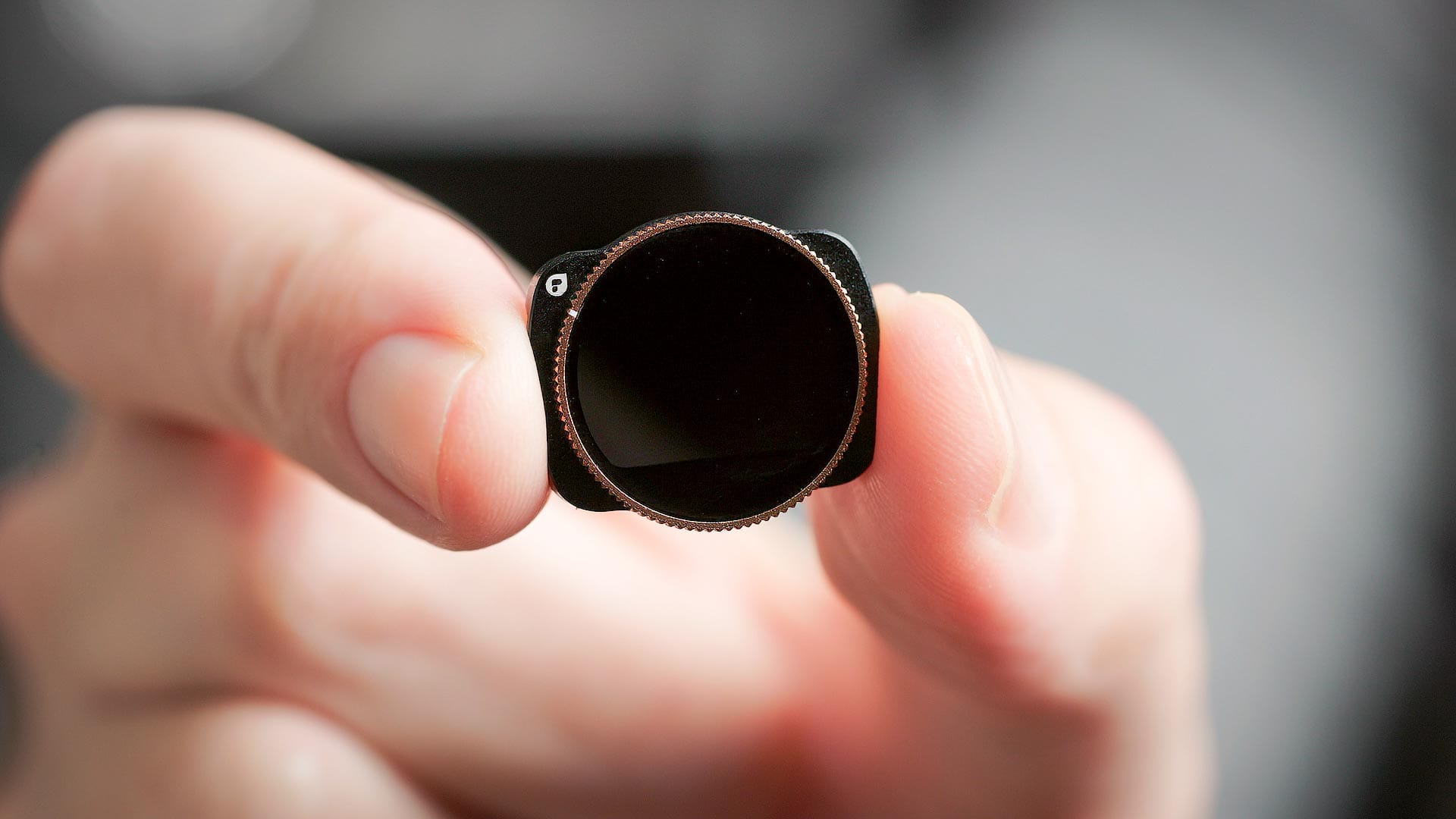
Here's a couple of comparison 4K video keyframes. First image was captured without filters, second with the PolarPro circular polarizer rotated to an angle that looked good to my eye. Here you can see how the polarized glass helped remove the unsightly blue light and reveal more of the rich green color and texture of the leaves.
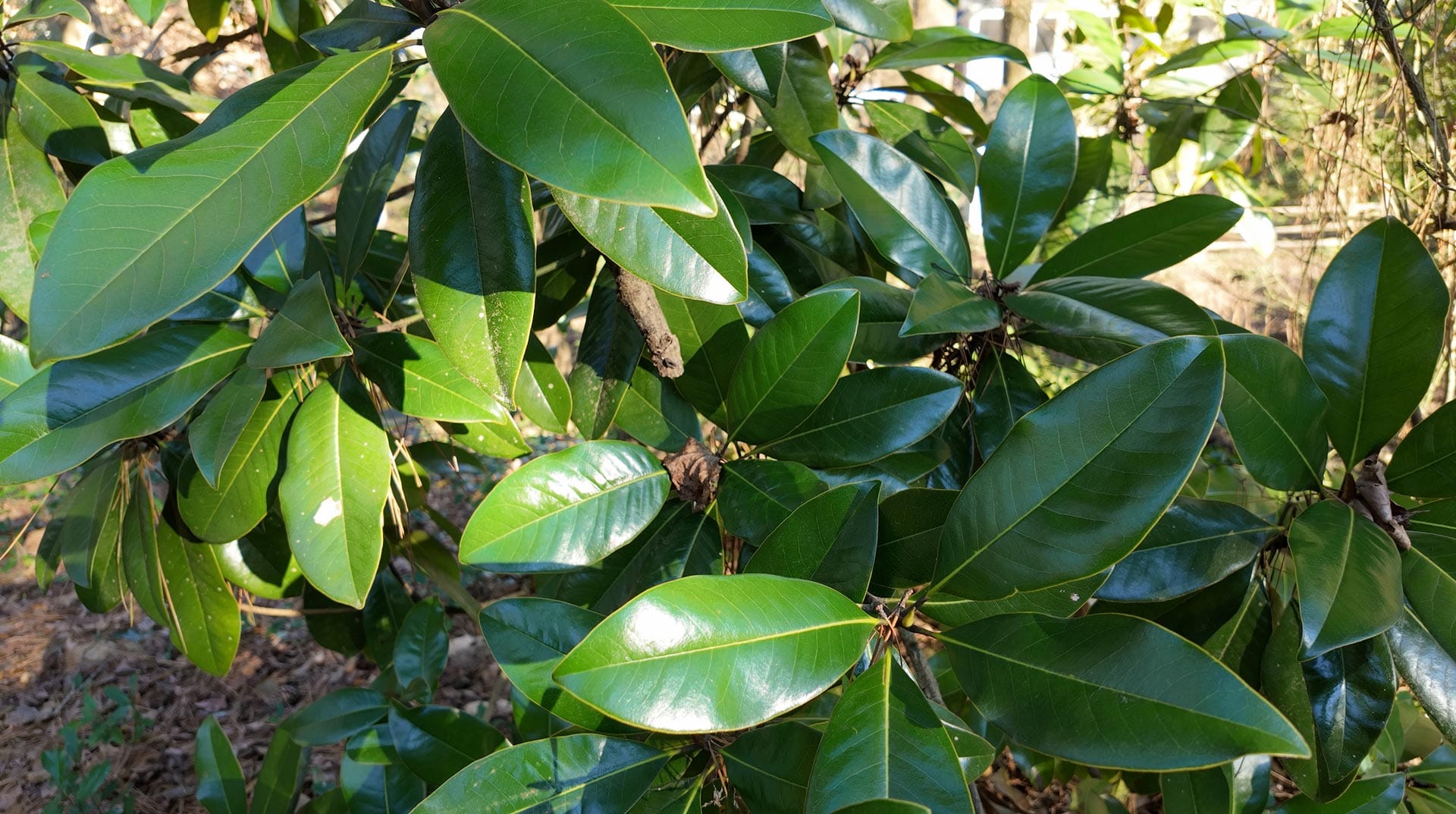
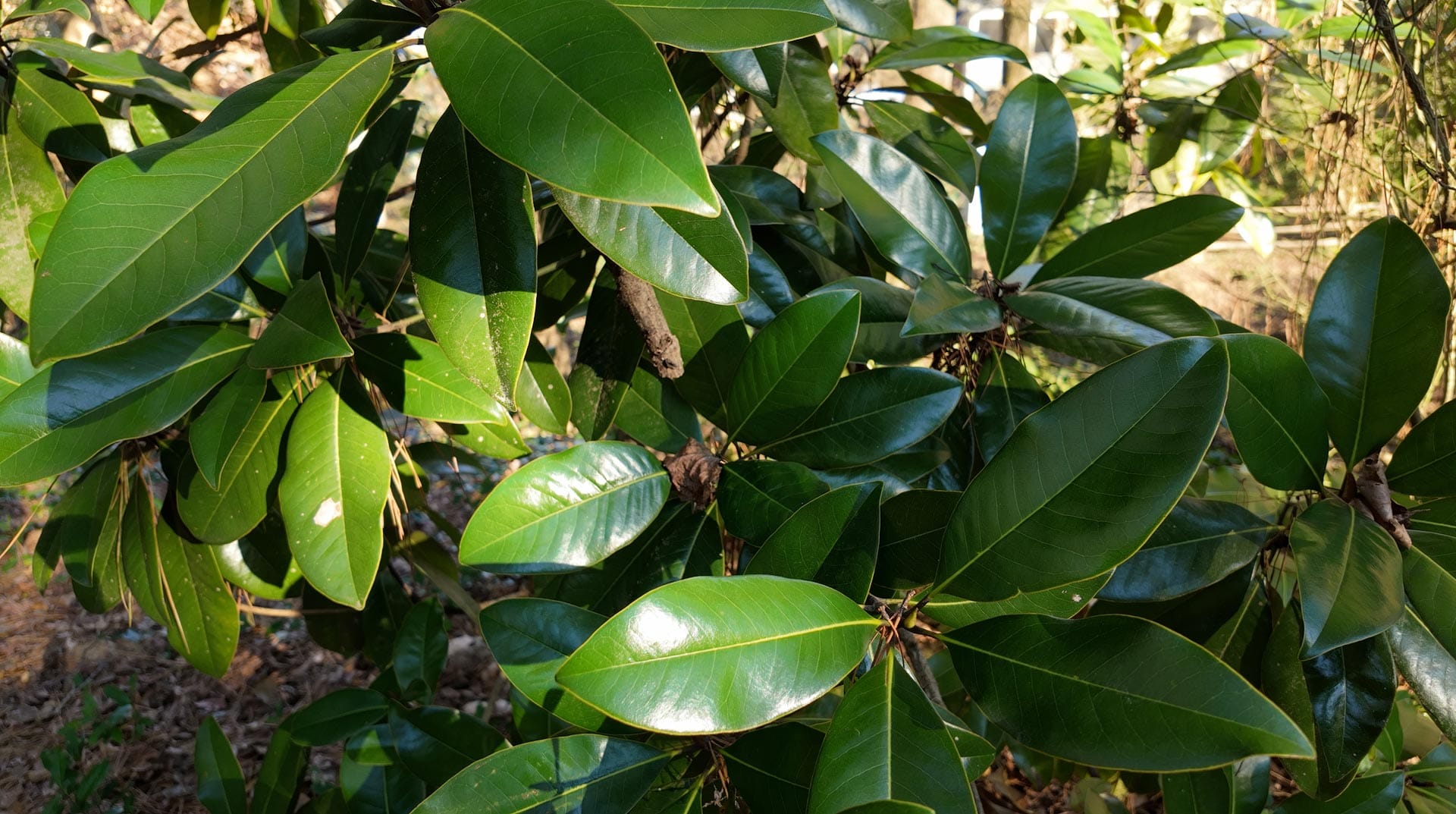
When using the dark CPLs (or standalone CPL for that matter), it's important to remember that polarized glass can introduce uneven brightness and exposure anomalies when used on bright, clear, sunny days. This is most noticeable at certain angles in the sky, which can turn dark blue. Here are keyframes from a 4K video demonstrating the difference between the PolarPro solid ND and dark CPL in these conditions:

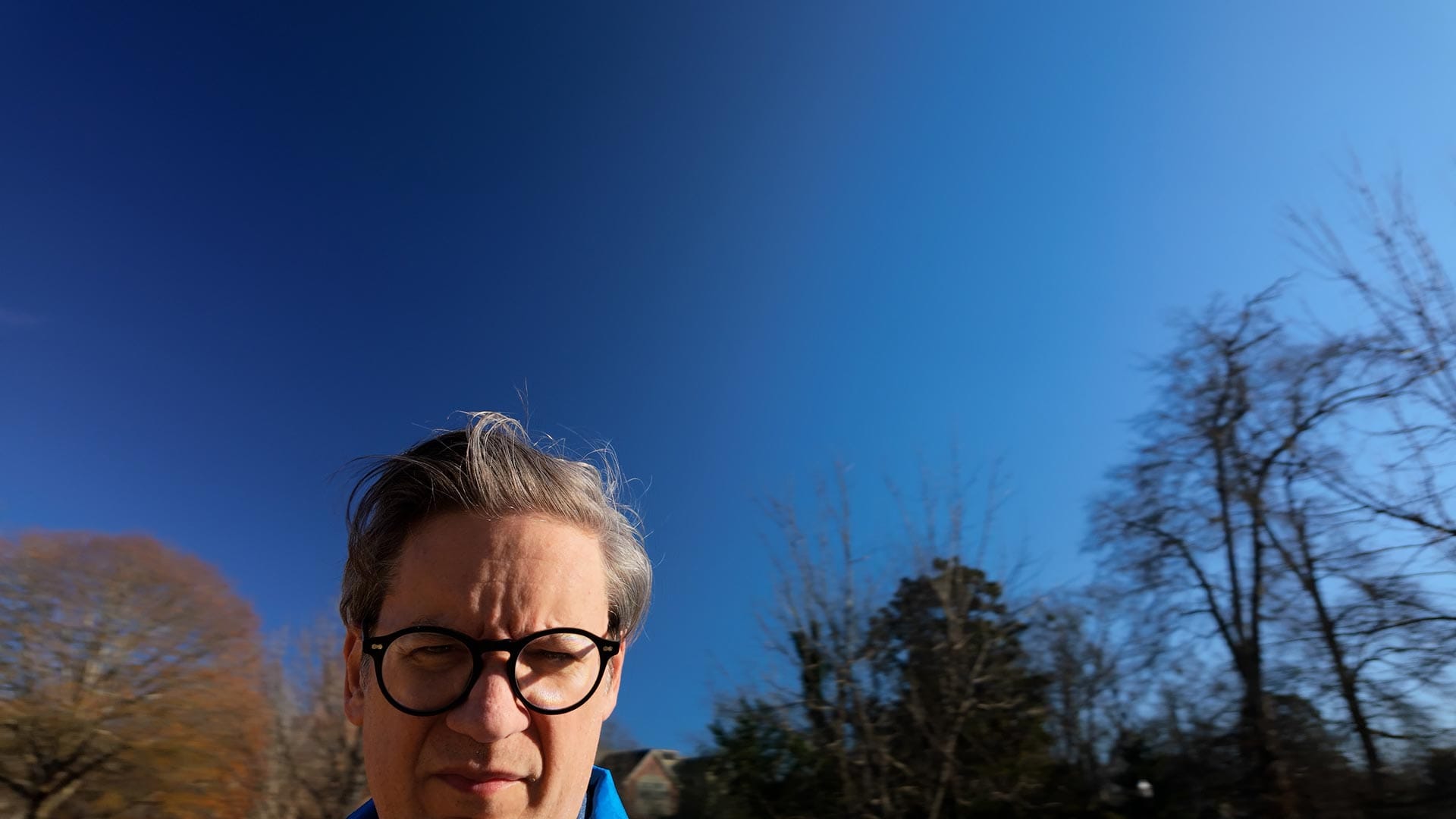
My advice? Avoid the dark CPLs outdoors on sunny days and use solid NDs instead. For everything else, the dark CPLs should perform fine, and will help introduce more clarity and color density than the solid NDs.
As expected, the PolarPro "Vivid" dark CPLs and standalone CPL introduce some color cast (a normal byproduct of polarized glass), but interestingly, the "Shutter" solid NDs contribute more. Solid NDs are typically more neutral, but PolarPro's ND8 filter leans warm, while the ND32 and ND128 lean cool. To make sure I wasn't seeing things, I photographed a color test chart in a controlled lighting setup using a fixed 5600K color temperature and saw the following:
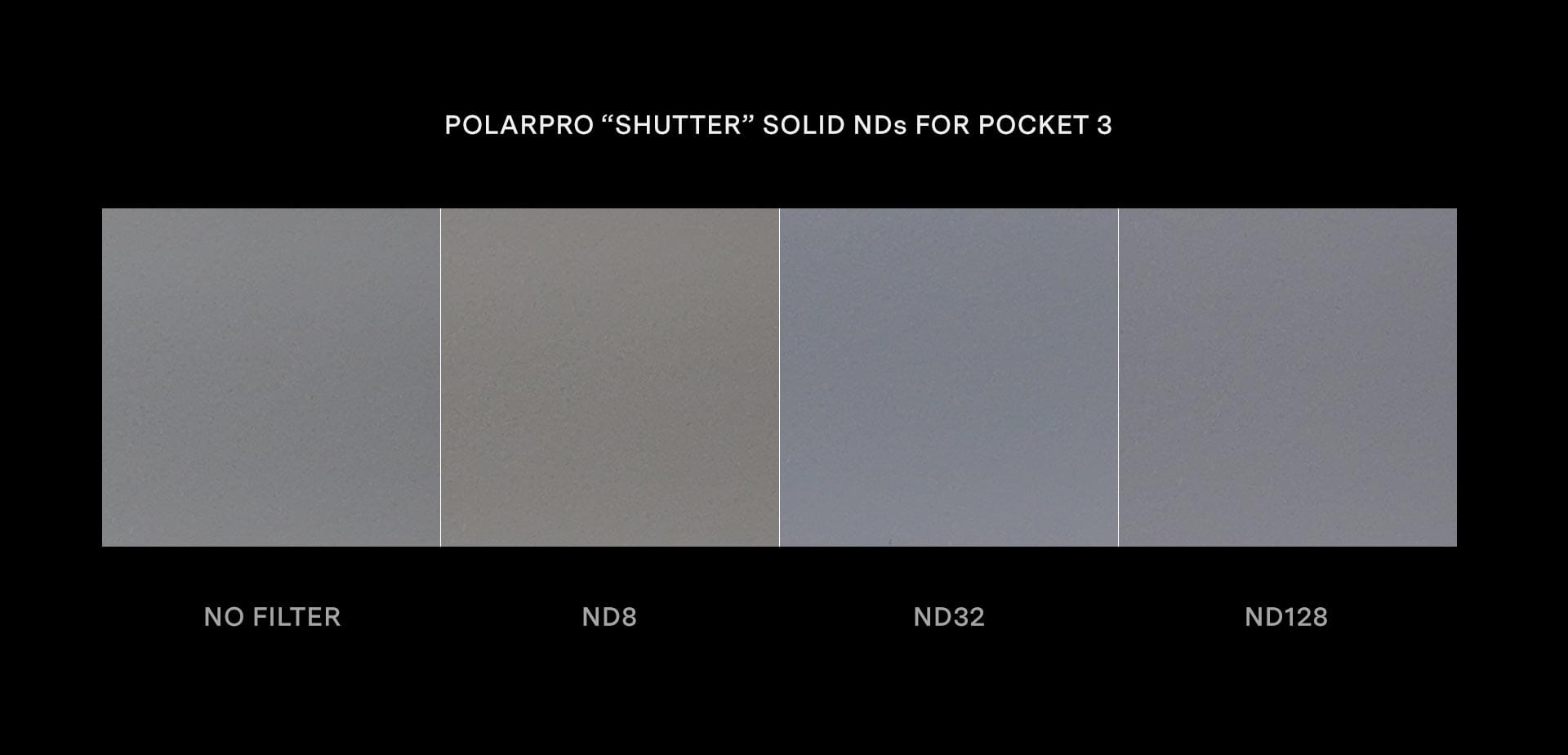
And here is the same test with the "Vivid" ND filters:
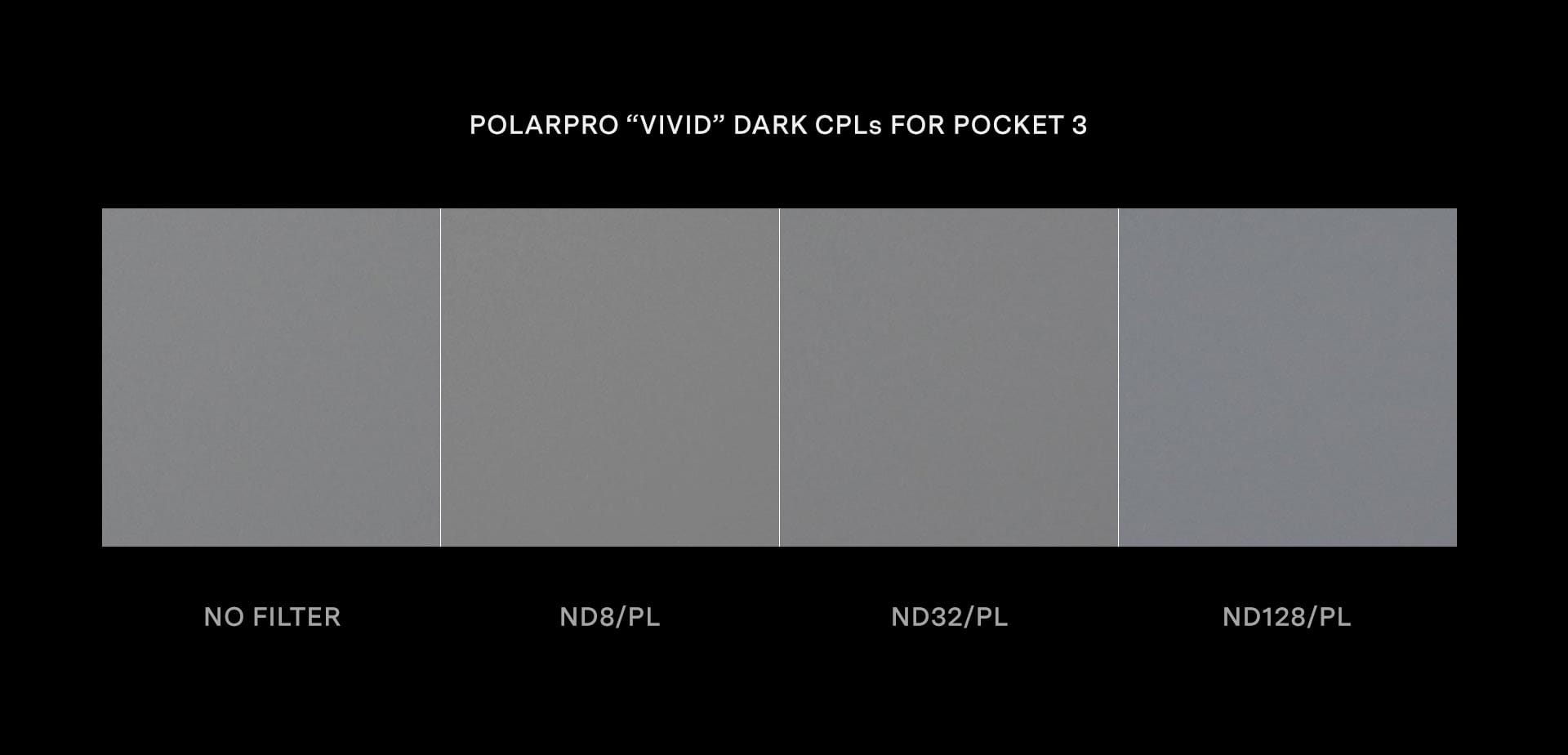
What this means in practical terms is that photos and videos captured with and without the PolarPro "Shutter" solid NDs will look a little different and may require some color grading to color match later in post. The difference is slight enough you may not even notice it, but it's a good thing to know.
Pros and cons of PolarPro's Pocket 3 filters
If you own an Osmo Pocket 3, PolarPro's filters would be a solid addition to your camera kit. If you own and use other PolarPro products, you'll definitely appreciate their Pocket 3 filters. The filters do a great job of properly exposing footage using fixed shutter speeds, increasing clarity, and elevating the overall look and quality of photos and videos.
One of the main cons with these filters (and any Pocket 3 filter for that matter) is their small size and tendency to get smeared with fingerprints. Not only are they small and easy to misplace, but they need to be constantly cleaned to prevent light streaks and exposure issues when shooting.
For users who don't necessarily care about optimum image quality and shutter speeds, and would rather hit record and go, filters may be more trouble than they're worth. But for everyone else, filters can definitely improve the perceived quality of Pocket 3 footage when properly used.
At the time of this review, PolarPro's solid ND "Shutter" pack and dark CPL "Vivid" pack cost $80 each, while the standalone CPL costs $40 in the United States. These prices are at the high end of the scale, and there are numerous competing filters out there from no-name brands that cost less.
Cheaper filters should achieve the same goal of blocking light and allowing slower shutter speeds, but typically use lower quality glass and have issues with durability, sharpness and color cast. There may be a cheaper set of filters out there just as good as PolarPro's, but if you want to buy filters from a reputable brand that will help improve Pocket 3 footage, these would be a great choice.

